'A Goofy Movie' At 25: An Oral History Of "I2I" And The Powerline Concert Scene
This month marked the 25th anniversary of A Goofy Movie, a film which has earned one of the most passionate cult followings of any in the Disney library. One of the biggest reasons for its lasting success is its timeless music, best showcased in the climactic scene in which the main characters, Goofy and his teenage son Max, sneak into a concert and manage to get on stage with the world's biggest pop star, Powerline. The show-stopping song playing during the scene is called "I2I," and the whole thing culminates with Goofy, Max, and Powerline doing "The Perfect Cast," an unorthodox fishing technique which, as the characters quickly learn, doubles as an amazing dance move.
Over the past few weeks, /Film has spoken with the people responsible for creating "I2I" and bringing this memorable scene to life. Here is the oral history of how the film's Powerline concert scene came together.
A Goofy Movie Oral History: Powerline Concert
Kevin Lima (Director): The sequence existed in a form in Jym Magon's very first script of the film. All animation really evolves over time, because you get to see the movie before you actually make the movie. We script the movie, then we storyboard the movie, and then we adjust as we go. The sequence got much bigger. It got much more involved. We added a chase sequence in the middle of it. It became more emotionally grounded. As we discovered the rest of the movie, it allowed that sequence to gain more importance in the storytelling. In the first drafts of the script, it was really just an event along the way. As we fractured Max and Goofy's relationship and brought them back together again, the sequence took on a much deeper meaning.
Bambi Moé (Music Associate Producer): The thing that was really at the heart of it was, how do you go about creating a song or songs that would come across as timeless and yet be hip and cool for the time? We had a lot of conversations about it.
Patrick DeRemer (Writer, Music, "I2I"): I had worked with Bambi Moé on a few Disney projects over the years prior to being approached for A Goofy Movie. They initially contacted me because of our relationship, and I immediately knew Roy was the guy to bring in on it, because we had written some really good songs prior to that, too. I remember going into a meeting with Bambi Moé and Kevin Lima, the director, and them describing the movie to us. They had the title, "I2I." Kind of like a Prince deal – "I Would Die 4 U."
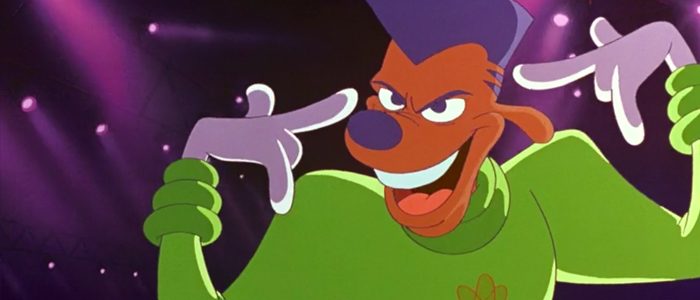
Kevin Lima: Powerline was always a pop superstar. We were looking at folks like Prince, Michael Jackson, Bobby Brown. There's been a rumor for a long time that he's based on Bobby Brown and that Bobby Brown actually recorded some of the tracks for the film. It's not true at all. He never recorded anything as far as I know.
Bambi Moé: Bobby Brown was certainly somebody that we talked about [as an influence]...I'm really thinking back. There might have been an initial inquiry, like would he at all be interested, and that might have been something where we didn't hear back from his people. But it never went anywhere. That's why I don't even remember it, except that he would have certainly been somebody that we would have looked at and listened to, and some of the animation of Powerline dancing and performing – you could see Bobby Brown, you could see Prince, you could see Michael Jackson.
Roy Freeland (Writer, Lyrics, "I2I"): I remember they gave us a synopsis of what the scene would be about, what the conflict was, and what the characters were, so we could think about it thematically. So we had an idea that it was a father-son thing, and we wanted it to broaden out to be a romantic relationship thing, too – the way people find each other.
Kevin Lima: I always like to try to figure out how the songs emotionally fit into the story. And with that comes throwing out a title. Not a title that they have to use, but something that inspires the content of the piece. I gave them a title and said, "This is what I need it to accomplish. This is what the song is about emotionally in the story." Then I let them run with it. Honestly, they came back with a winner. Well, two winners, really, in both Powerline songs.
Bambi Moé: If you really go through the lyric to "I2I," those are beautiful, beautiful lyrics. There's so much heart in those lyrics.
Roy Freeland: It's a natural expression of joy and connection. It's not overthought, for a change. I've spent the last twenty years trying to be profound and tragic as a novelist, so it's ironic to have this natural expression of joyfulness happen the way it happened.
Patrick DeRemer: The way we usually worked was that I would deliver a rough demo of the music with a gibberish-type lyric so I could communicate the melody to [Roy], and then he would do his wizardry and write an amazing lyric. This is back in the days when sequencers were the industry standard in regards to making music. Typically, I'd program the instruments for the entire track into one of these contraptions, except the vocals, and I used an Akai MPC60, as I recall.
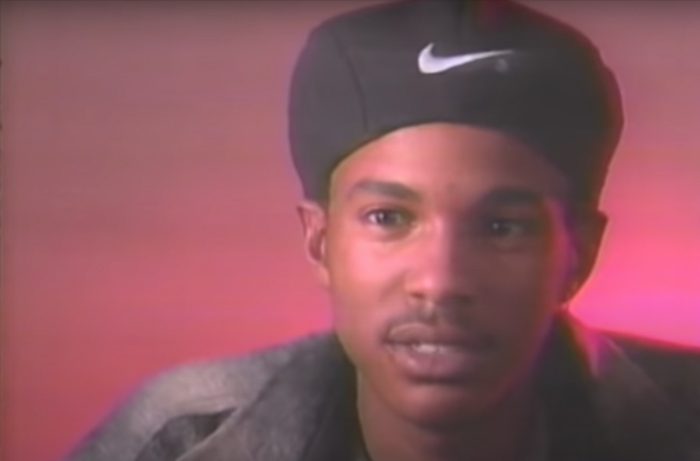
Bambi Moé: It was like, "OK, now we have to make these songs sound amazing."...I was at Capitol Records at a session for another project, and I heard this singer singing in another studio. The singer was Tevin Campbell. I said, "Oh my God." Nobody really knew who Tevin Campbell was – some people, but he certainly wasn't as popular as he became. I loved the voice...he was Prince's protege and he was discovered by Quincy Jones. So I knew that in order to get Tevin Campbell to say yes to sing the songs, the tracks themselves had to be at that level. So who's in the Prince camp? Maybe if I can get ahold of Prince's producer, that would do the trick...sure enough, that was David Z.
David Z. (Producer, Recorder, and Mixer of "I2I"): I worked with Prince from the beginning. I did Purple Rain, I did "Kiss," I did a lot of his biggest things. I think [the filmmakers] trusted me, and they wanted me to give it a treatment, and that's what we did.
Patrick DeRemer: When David was hired as the producer, I sent him the MPC files on – get this – a floppy disk. You'll have to do some research into what one of those are. If you listen closely, I can still hear some of those tracks on the final recording, so that's kind of fun.
David Z.: They sent the demos to me, and myself and Paul Peterson, who is a talented guy, we [performed and recorded] the tracks, just the two of us, up in Minneapolis at Paisley Park.
Bambi Moé: When [David] said yes, I literally thought I was going to faint. Because he suggested immediately that we record the tracks at Paisley Park. So for me, as a music person, that's like – getting to work at Paisley Park? Where Prince creates? That's unbelievable!
David Z.: I was really excited about it because it was such a different animal for me.
Bambi Moé: [Bambi reads aloud an excerpt from her forthcoming book Part of the Magic – A Collection of Disney-Inspired Brushes With Greatness] The drive to the studio seemed to take us through the middle of nowhere, and then suddenly, a white, modern industrial complex appears. We drove to the back side of the building and up to the giant metal garage door. The experience was straight out of a Bond film as layers of doors opened. There I was inside the inner music sanctum of the Great Purple One's studio...I had heard that the building had many secret exits and entrances, and I was especially interested in seeing Prince's legendary hidden boudoir. After a couple of days of recording, I got up the nerve to ask if I could get a tour of the complex and I was not disappointed. Prince's hidden room was a highlight. It had a circular bed with the requisite number of mirrors on the walls and ceiling. It looked frilly with lots of satin material, but the thing that struck me was the number of framed pictures all over the room. I noticed that every picture was a picture of Prince, and he was the only one in the picture.
David Z.: [After I received the demos], we created the songs in our own grooves. It was just Paul Peterson and myself. I programmed the drums, played guitar, he did the keyboards, and we piecemealed it together. We started with the drums. I had to make up a beat that would work. I'm used to doing that, because we did that a lot with Prince. Drums first, and then bass next, and then we start filling it in. It took several days. We did two songs ["Stand Out" and "I2I"], and I don't know exactly how long it took us – probably a week, because we did different things on different days, and had to reassess it.
Patrick DeRemer: I think overall, David's expertise, the director's expertise visually, and the artists', of course, they took it to another level. I happened to be at the recording session when Tevin Campbell was there, because I was then working for Disney on the other side of the desk in music production.
David Z.: We flew out to L.A. and did the vocal [with Tevin Campbell]. And we did the background vocals – there's a group called the Waters, who were gospel singers, that's who's singing in the background. Also a girl named Rosie Gaines, who was in Prince's group, has a solo. She's the high voice. We did the vocals at Sunset Sound and by that time, we did all the tracks and made sure we were in the right key for Tevin. He followed the demo, but he sure put his own slant on it. He did a great job.
Bambi Moé: Tevin was just at the beginning of his career. "Round and Round" was a track that was out, or just coming out. He was charming, delightful, he was funny. He worked really hard.
Patrick DeRemer: Tevin was amazing. Did it in a couple takes, as I recall. Very humble, sweet guy. Then, gosh, he was still a kid. Very pleasant. Took direction well, and was just happy to be involved. It was a fun day.
David Z.: There's all kinds of tricks in there, if you listen carefully. There's gated guitars, flanging, all kinds of tricks we used in the '80s in that production.
Patrick DeRemer: It's called a modulation when you change keys in the middle of a song. By nature, once you bring that key up another notch, it elevates the music and lyric to another level. Just because that's what your ear hears: something new, yet familiar. We wanted it to go to another level towards the end of the song.
David Z.: I'm not a big fan of modulations, but this one worked. Usually, they pick up the song's energy. A lot of people do modulations. That added to it. But I think the beat of the song is really what picked up, because there was nothing like those two songs in the movie at all. It was a total production. It was a modern R&B production.
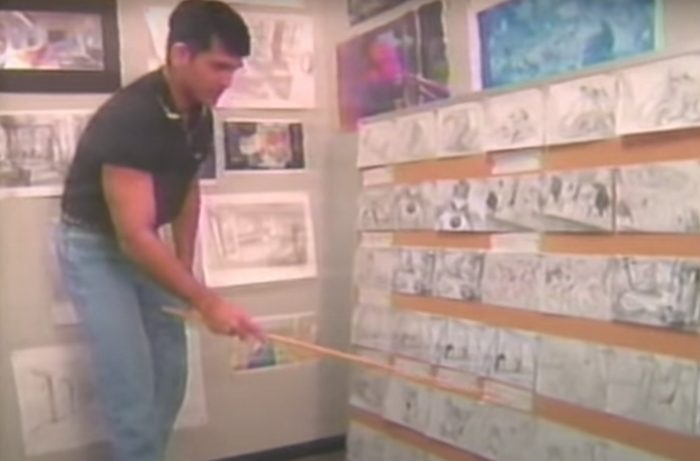 Kevin Lima: We storyboarded the entire sequence first, so we had a very intricate sense of what we wanted from it.
Kevin Lima: We storyboarded the entire sequence first, so we had a very intricate sense of what we wanted from it.
Gregory Perler (Editor): Brian Pimental, who was in charge of storyboards, he and his team boarded it. The way they used to do it in those days was pin every single storyboard up, play the song, and then run with a little pointer and point out the beats. The one unique thing about that song, though, was that there was live-action reference done for it.
Kevin Lima: It was actually one of the very last sequences to be finished in the film. We found that we were up against a huge deadline with the movie. I actually asked a good friend of mine, who was a storyboard artist on the movie, Steve Moore, to go to Australia and the entire sequence was animated in Australia.
Steve Moore (Storyboard Artist and Sequence Director, Sydney): [Kevin] called and said they were behind schedule, and said the concert sequence at the end had a ton of effects and it was more than they could do to hit their deadline. So he said Disney had a studio in Australia that does a lot of their TV stuff, one of their top outsourced studios down there, and would I want to go down there and supervise this sequence? I was like, "Yeah, sure. Go to Australia for six months? What's the problem?" (laughs) They were in such a hurry that they were like, "Tomorrow, can you meet with the choreographer?"
Kevin Lima: We choreographed the whole [scene] based on the storyboards.
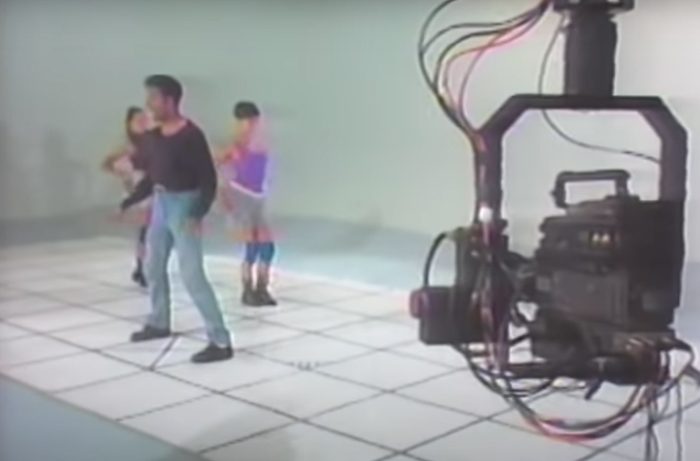
Steve Moore: We met, looked at the storyboard reel, and talked for a bit, and then two or three days after that, we were in a little soundstage in Burbank. We'd hired a guy to video record [the choreographer] and his dancers, and they did the "I2I" dance. From the boards, he came up with the "I2I" dance, and that's why you can actually do the dance – because it wasn't left to animators to come up with, it had actual moves to it.
Kevin Lima: I wanted to create a dynamic that separated Powerline being more grounded in the choreography that he does, as opposed to Max and Goofy, who can slide across a 50-foot stage, fall from the rafters, blow up, and who can do The Perfect Cast. Which, I don't know if you've ever tried it, but it is quite difficult.
Gregory Perler: In the old Disney films, they filmed the actors moving in live action and then the artists literally traced over them. If you look at Snow White, for example, who is human, she moves exactly like her live-action reference. But with Max and Goofy and Powerline, they're not the same proportions. So you can't do that.
Kevin Lima: We knew that we wanted The Perfect Cast to be the center of the whole thing...we used that, as a lot of animation does, to be an influence for the animators. They didn't copy it, exactly, but they certainly used it to get a real sense of continuity and an overall sense that there was a beginning, middle, and end to the piece.
Gregory Perler: Kevin thumbnailed every single shot from the live-action reference that he wanted to include in the song, and he spaced it out in the middle of the storyboard sequence that Brian had done. We incorporated that into the shoot.
Steve Moore: I had this one animator, he kept pulling out Paula Abdul videos. I said, "We have reference." He goes, "Yeah, but she does this really good – " [And I was like] "The reference!" He just wouldn't do it. I finally had to boot him off the crew because I couldn't get any work out of him. He was so obsessed with Paula Abdul. (laughs) He was a good animator, too! But I was like, "Look, if you can't do this, I have to move on." I warned him, and he just wouldn't listen to me. He thought, "Ah, what's he going to do?" Well, I put him back on the series stuff [like Goof Troop], because the studio was doing series work for Disney at the same time. They were not so happy with me because I was getting all their best people. Once I let that guy go, they were very happy. They said, "Thanks for doing that! We got a lot of footage out of him last week because he's so mad!"
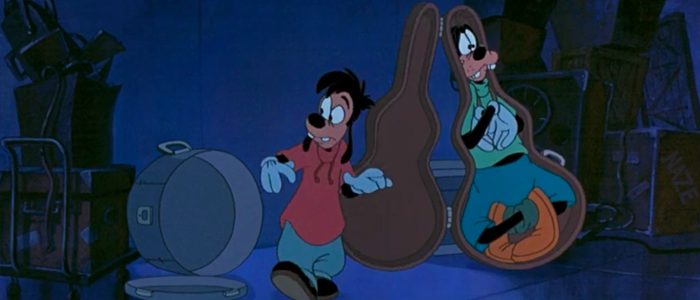
Gregory Perler: It cuts from Max and Goofy very high up at the top of the waterfall where the little rescue has happened, and a map flies in, and the map transitions you to the concert. So then you have that music start, you have a couple of establishing shots of a stadium, and people arriving. Then these roadies throw these cases in, the cases open up, and Max and Goofy come out. And you just go with it. It may have been one of the later sequences that was boarded, so there wasn't a lot of time. Early on in the process, a sequence can be overthought. And I'm sure if we had done this one very early on, someone would have said, "Well, how did they even get in the cases?" (laughs) But we didn't, and it's such a treat to watch it and you just buy it.
Kevin Lima: I was always fascinated with David Bowie, and the way that he became characters. He put on a theatrical version of himself as he performed. I thought, "How can we do this with Powerline? Is there a way to give him a visual identity that makes him ultimately super theatricalized?" That's where it all came from. That's where the atom came from, the electricity. It was really about creating this identity that could live within the world of Goofy and Max.
Bill Farmer (Voice of Goofy): When you do a take and they say, "OK, be electrocuted," then you just let your mind go with it. What's it like to be electrocuted? Sometimes you go, "Whoa!" or grab your throat and kind of shake it, like, "Whoa-oh-oh!" High ones, big yells, all that. Then they pick the best ones and put them in. But when you do those yells and things that are rough on the vocal cords, they always save those for the end of the day, because if you strain your throat you don't have anything else to do after that.
Bambi Moé: Up until this pandemic, I think going to see live music was – there's nothing like it on the planet. I think what Kevin and his team did was to visually animate something that we could all relate to. The experience of it. The way it was communicated. It wasn't just seeing the character performing. I think what really makes it so special is that it felt to me that there was an intimacy. You were a fly on the wall in the middle of this unbelievable concert. You were seeing it through the eyes of the lead characters – in this case, Goofy and Max. It was less about Powerline and more about them.
Gregory Perler: You've got to be on certain things on certain times within the song. All the backstage stuff that involves Goofy getting separated from Max, Max being chased by a guy – they're cut within an inch of their lives. Because you've gotta be back on stage when you've gotta be back on stage. I do a lot of movies that have songs that have performance stuff but also story stuff, and this was a great first one to do because it really works.
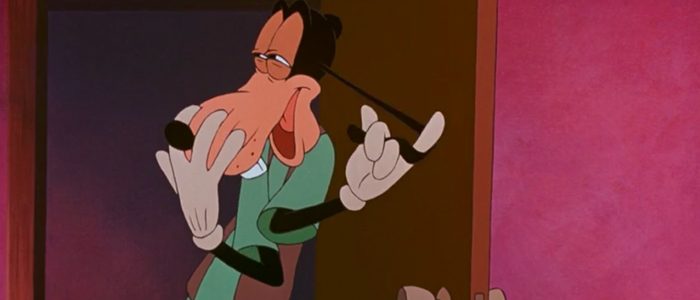
Kevin Lima: Because we were all separated – we were all in different parts of the world – I would do videotapes in which I acted out all the scenes. I may have gone through that scene with them. I didn't dance it, but I did do the acting that the characters would have done. So all of the surprises, the double-takes, Goofy holding his face when he sees Trini in her dressing room, all of that stuff are things that I actually was doing on my videotapes to help the animators understand what I wanted from the scene.
Bill Farmer: The heavyset woman who sings with Powerline in that scene was a character who was in the "Open Road" scene, traveling along with a little nebbish kind of a character. She had a lot more in the movie that got cut out, except for her in the scene of "Open Road" and then as one of the backup singers that Goofy sees in the dressing room and has the most weird look on his face. (laughs) He's all embarrassed. She's the one that's vocalizing with Powerline on "I2I."
Steve Moore: It was pretty tight. We had it down to what it needed to be, and there was no time to waste on anything. The only thing that still had to be worked out when I got to Australia was how the lighting was going to work. Because there was so much concert lighting to figure out...one of the concert scenes had so many different light things going on that we had like 32 levels of animation. Because we were shooting it all in a camera back then. They had given up their conference room for me to have an office, and the entire conference room floor was covered in layers of this scene while we were checking it before it went to camera...In CG, you would just set the lights. But we had to figure it out. We had one thing where it was flashing overhead, and another thing going around the sides of them when they were dancing. So the source of light's coming from here, and we had to draw a rim matte kind of thing, and they would paint that. It was a lot of stuff to figure out like that.
Gregory Perler: It was one of the first scenes I ever edited on the Avid, digitally. Prior to that, we were editing on film. When we started the movie, we were on 35mm film that was shot and edited on an editing table, and then after about a year, Disney said, "Hey, we're thinking of switching to these digital editing platforms. Are you interested?" And I said no, because we were already halfway through. Then I realized it wasn't really a question. (laughs) It was, "OK, you're going to get an Avid and you're going to learn how to use one." Even though I was reluctant, I admit that "I2I" was the perfect sequence to cut on the Avid because A) you were integrating another source medium, which was 30 frame per second video of the [reference footage of the dancers], and B) you have to be able to react so quickly and extend a drawing, take away from a drawing, or repeat a drawing so much more nimbly than you could if you were working on film.
Kevin Lima: With film, you have to pull it out of the gate, cut it, splice it, and put it back into the flatbed. With Avid, you could do it seamlessly without physically having to handle anything. I remember when they told us they wanted us to do this, and we may have been the very first to do Avid work at the studio. I remember us looking at each other and saying, "Oh man, we're in for it now, because we're going to be working out all the bugs as we go along." But really, it was kind of seamless.
Carole Holliday (Character Designer, Roxanne and Stacey): It wasn't until maybe about ten years ago that I found out that people your age love A Goofy Movie. Because it was the movie of their childhood. I had a girl that I went to church with who was like, "Can you draw Roxanne and Max on my Keds?" She bought brand new Keds so I could draw them on her shoes. I was like, "OK!" (laughs)
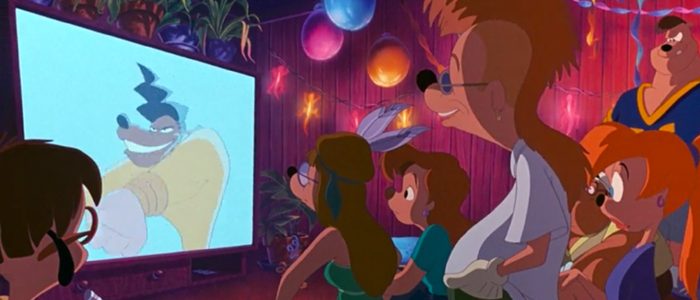
Gregory Perler: I don't even know how long the song is. It might only be three minutes, but there's so much jammed in there. You've gotta see the kids watching them on TV.
Kevin Lima: I don't recall when we actually pulled in the idea that they were going to be on television. The concert being on television gave us the ability to cut around the country, or cut to the different players within the movie. We knew that we wanted Roxanne to see what had happened, we didn't just want her to hear that it happened. So that's where this idea of being on television came into play. We knew that was really the crux of it: Roxanne seeing Max and recognizing that he wasn't just pulling one over on her, that he wasn't lying to her because he was afraid – he was actually there.
Carole Holliday: I was always drawing Roxanne because I [joined the production in] France hopefully to animate the character that I designed. I didn't realize until I got there that she was popular. At one point, I had done a doodle of Roxanne with an Eiffel Tower hat on. I drew another picture over it, so I took the rough, crumpled it up, and threw it in the trash can. The next day, I came back to my desk and my desk mate had pulled it out of the trash can and put it on his wall. I was like, "What?" It was very touching...I went there, and all of the French guys were like, "I want to draw Roxanne!" I think that's the thing: she's innocent. She was just this schoolgirl. People like innocence. They're drawn to innocence. Even though in her biography, her favorite song was The Police song "Roxanne," a story about a girl who's not innocent. But Roxanne was. At the time, I was working with teenagers through my church, and I just treated her like the kids that I knew, and I think people saw that in the character.
Gregory Perler: If I remember correctly, it's Bobby who sees him first. It's treated as, not a joke, because it has real importance for [Roxanne]. And it sets up the fact that [Max] has to go back and tell her the truth, even though he actually completed his whole deception.
Carole Holliday: The ending doesn't work unless the director and his head of story and the story crew have set up from the beginning what the character's emotional want is. The fact that Max thought he wanted one thing and was fighting the very thing that Goofy wanted through the whole thing, and at the end, gets the relationship with his father. It's like, "I've missed out on everything else, but I got this one thing I wasn't expecting." Then the Powerline concert at the end becomes the cherry on top. It's like, "Oh my goodness, you get your dad and you get this! You were a bad kid, but you won because you actually acknowledged your foolishness!" I think that's why it pays off, is because he repents. He gets what's important, and then he gets given this other gift on top of that.
Kevin Lima: I was really wanting to make a John Hughes movie in animation. That was really my goal. Can we tell a more contemporary story with contemporary characters than had been told in animation up to that point? So at every turn, I was trying to make it feel like it was happening today. Well, 1995 "today."
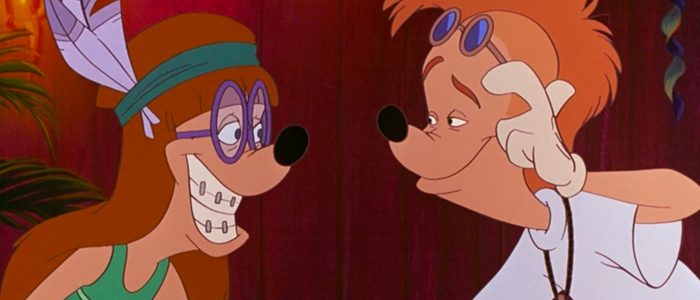
Gregory Perler: I don't remember how the whole thing with Bobby and Stacey came about, but I think the music is vamping a little bit there, so there was time to play that out. Kevin and Brian came up with that, and we made it fit as best we could.
Kevin Lima: We felt like we should wrap up all the other stories that we've been telling. Pete, especially, being just flabbergasted and spitting out his beer on the television screen. I think maybe we're the only Disney movie to have a character drink a beer. But he spits it all over the television because he is just amazed that what Goofy said was going to go down, went down. The concert really gave us a way to tie everybody's story together. It's amazing for me how, in animation especially, you can use music or a song to tell so much of your story in a really economic way.
Gregory Perler: It really does feel like the climax to a movie. You're putting this thing together sequence by sequence, not always in order. Everybody loved "Stand Out" at the beginning of the movie, but by God, ["I2I"] is a climactic musical number, and it has real scope and scale that maybe the rest of the movie didn't. You've got wide shots with crowds and things we take for granted today.
Steve Moore: We'd hear that song every day. It was like, "Here it goes again." But for me, it never got to a point where I didn't like the song anymore or couldn't stand to hear it anymore.
David Z.: It's funny, but those songs really lasted. Actually, the whole movie has taken on a second and third generation. My kids loved it when we did it, but then all these other people, I guess it was just the time where a lot of people had kids. But it was for grown-ups, too, because we didn't make the song as a kid's song. We made the songs as a sophisticated, radio-friendly groove.
Gregory Perler: It's the culmination of this little movie that people have really grown to love and become invested in. It feels like this is the most satisfying way the movie can end. It feels inevitable in the best possible way for a movie. When it takes two, two and a half years to do a movie like that, and you don't necessarily work in order and we have other songs that we didn't use and stuff, you just never know.
Kevin Lima: I think the scene resonates because it's backed with a powerful emotional through line. I think you get to see the culmination of a very difficult journey for Max and his dad come to a very rewarding end. Max fulfills a dream in some ways. Not only does he get to go on stage with Powerline, but he gets the girl at the end of the day. I think those are all very powerful themes wrapped up in one big song that echoes those themes. The song truly echoes what is happening in the plot. I think that's what makes it truly stick in a real way.
David Z.: That was one of the hippest movies to come out, musically. There hasn't been anything as cool since maybe an old Betty Boop cartoon where they used Cab Calloway. That was some great music. But cartoons didn't have great music until then – not that I can remember. It was sort of a brave statement for me to make because it hadn't been done.
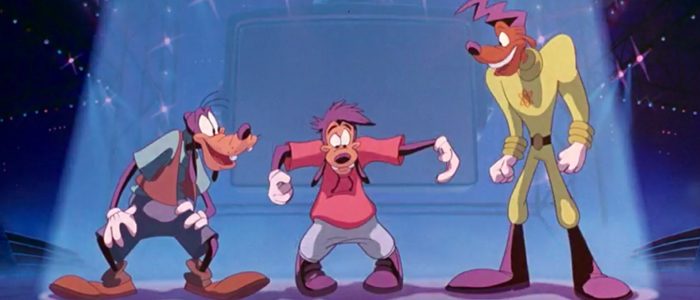
Patrick DeRemer: My kids, who are adults now, they still have this song in their playlists. As do their friends. This generation of millennials – late twenties to mid-thirties – love this song. It makes me very proud as a writer to be proud of, first of all, the Disney movie catalogue. But then to be a part of such a popular song that's touched so many people, it's really exciting to me. It's one of my favorite moments in my career, being able to touch that many people so deeply. It's an emotional thing. It's that magic relationship when lyric, music, emotion, and film all comes together, and it fits. It's kind of hard to describe exactly why or how it happens, but when it does, you know it.
David Z.: It expanded so far, and had such a big audience. And still has a big audience. I didn't realize people were so dedicated to it. We went to a screening, a 20-year celebration, and it was packed to the gills. I couldn't believe it. People were running on that memory for a long time. The popularity of it has exploded.
Steve Moore: For people today, they grew up with it. This was the age of the VCR, and kids watched this over and over and over again, and now they're in their thirties, and you mention A Goofy Movie and they get gooey about it. It's in their hearts from their childhood, and they can watch it today as adults and still enjoy it. It still holds up, and I think that has to do with the emotional quality of the film, how it draws you in, how the song was part of the story, it's the climax of the movie, and the father and son are dancing together. It's just a nice sentiment and a nice way to end the movie.
Roy Freeland: I've been watching the TikTok dance challenge. I'm OK [at it] now. I tried it. I decided not to post my attempt. (laughs) But it's so much fun to see people get up and do it. There was a high school principal, there was a doctor in New York wearing his scrubs with an inspiring message on top of that about good news of how the curve is flattening. It's a contemporary message, of the moment right now – that hopefulness and connection between people.
Bill Farmer: I have tried to get that [dance] down as close as I can. I've tried to remember how it is, and I actually found my old script. "Ten o'clock, two o'clock..." I'll attempt it, but it's not really a video-worthy thing. (laughs)
Patrick DeRemer: If you know Bruno Mars and any of the people at Disney live action, they should put a live stage version of this together with Bruno as Powerline. That would be great! Can't you hear him singing this?
Bill Farmer: Over the years, many fans have come up to me – probably more than any other project I've ever worked on, and I've done close to 4,000 projects for Disney – and A Goofy Movie stands out among all of them with the fans. They always come up and say, "I couldn't talk to my dad, but we saw this movie, and it became our movie." They'd watch it every year or listen to the soundtrack together, and "I2I," it encapsulates the whole theory of the movie. They can see eye to eye without seeing eye to eye on everything. A father and a son can find common ground and be buddies, even though they're separated by one being Goofy and one being embarrassed of his dad. And everybody's been embarrassed of their parents, so it really strikes a note that you can relate to.
***
A Goofy Movie is currently streaming on Disney+. All screengrabs are either from that presentation or from this "Making Of" documentary about the movie found on YouTube. Tevin Campbell's representatives did not respond to our requests for an interview, but if you'd like to read his reflections on his contribution to the film, you can do so here.
